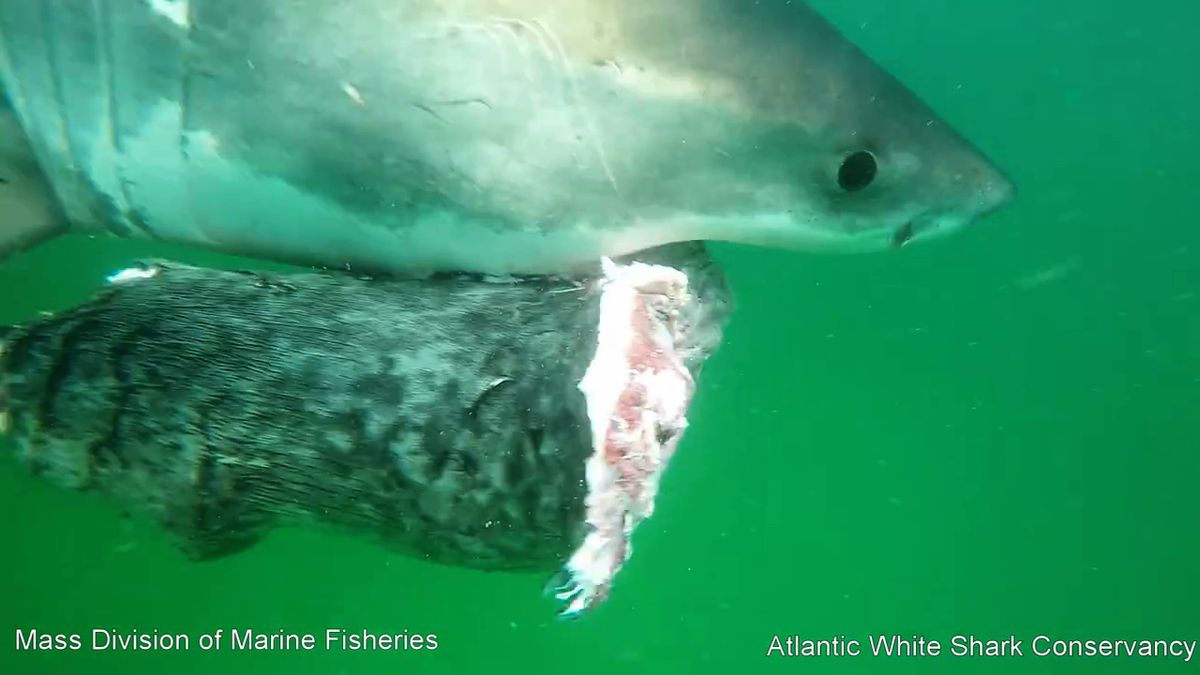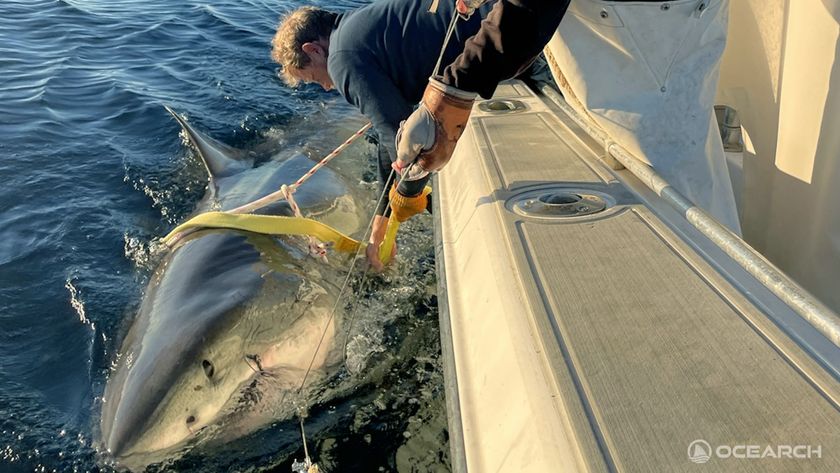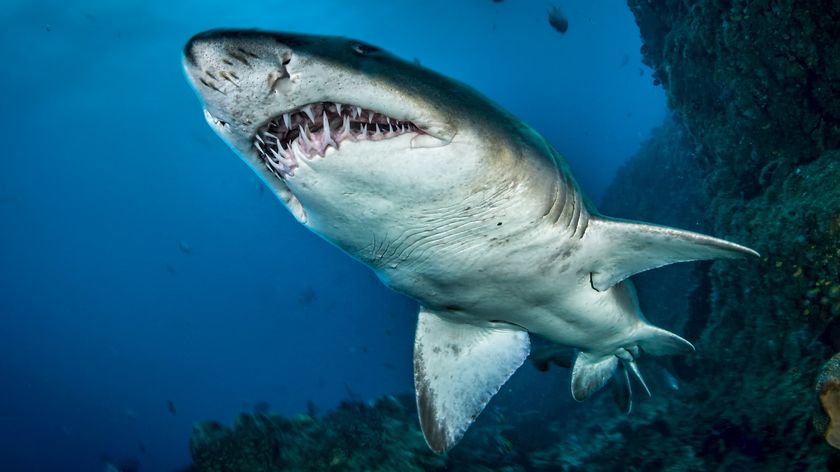Great White Shark Dangles Seal Meal from Its Maw

"Didn't your mother ever tell you not to swim with your mouth full?"
Not this female great white shark. The predator, with a partially eaten seal carcass hanging from her teeth, was caught on video by biologist Greg Skomal of the Massachusetts Division of Marine Fisheries (MA DMF), working with the Atlantic White Shark Conservancy (AWSC).
Measuring an estimated 11 feet (3.4 meters) in length, the shark — and its gruesome mouthful — was spied in Atlantic waters near Massachusetts, approximately 300 yards from the Monomoy National Wildlife Refuge. Researchers are currently conducting a five-year shark population study in the area, AWSC representatives wrote in a Facebook post describing the video.
Skomal used an underwater GoPro to capture the grisly sight, which AWSC representatives posted to their Facebook page on June 20. The shark cruises past the video camera with a portion of partly consumed seal torso dangling from her lower jaw, offering a rare glimpse of the large predator's feeding behavior. [In Photos: Great White Sharks Attack]
It is especially unusual to capture photos or video of sharks preying on seals in northwest Atlantic waters, though their deadly feeding strikes are well-documented from interactions off the African coast, an AWSC representative said in a comment on Facebook.
However, this wasn't the first time that AWSC video recorded a shark nomming a mouthful of pinniped. In 2014, one of their research teams filmed another great white shark, dubbed Salty, devouring a seal in waters near Chatham, Massachusetts.
Great white sharks' hunting strategies are a subject of great interest to marine biologists, who face enormous challenges when investigating the day-to-day behavior of ocean animals like sharks that live in the open sea, according to Gavin Naylor, a biology professor at the College of Charleston.
Sign up for the Live Science daily newsletter now
Get the world’s most fascinating discoveries delivered straight to your inbox.
Naylor told Live Science in 2015 that observing great white sharks can be difficult because they are hard to raise in captivity, and studying them in their ocean home comes with hazards to divers.
When it comes to great whites, "there's a lot we still don't know," Naylor said. The Cape Cod area has come to be recognized as a location where great white sharks gather, offering AWSC researchers a unique opportunity to learn about their habits, Skomal said in a statement.
This particular great white shark's video debut was the first time during the MA DMF survey that she was seen by the scientists, and she was assigned the catchy name "WS 16-02," the AWSC reported on Facebook.
Original article on Live Science.

Mindy Weisberger is an editor at Scholastic and a former Live Science channel editor and senior writer. She has reported on general science, covering climate change, paleontology, biology and space. Mindy studied film at Columbia University; prior to Live Science she produced, wrote and directed media for the American Museum of Natural History in New York City. Her videos about dinosaurs, astrophysics, biodiversity and evolution appear in museums and science centers worldwide, earning awards such as the CINE Golden Eagle and the Communicator Award of Excellence. Her writing has also appeared in Scientific American, The Washington Post and How It Works Magazine. Her book "Rise of the Zombie Bugs: The Surprising Science of Parasitic Mind Control" will be published in spring 2025 by Johns Hopkins University Press.
Most Popular




